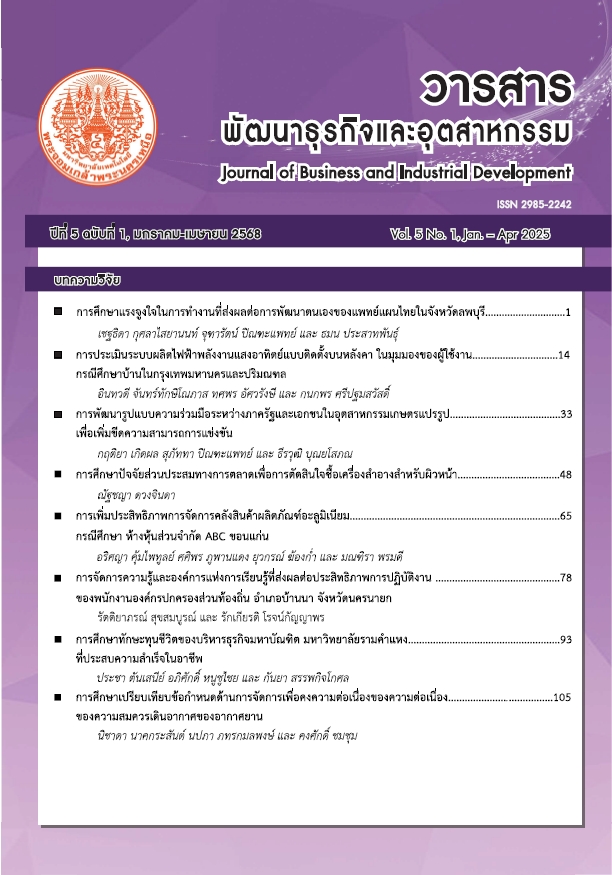Comparative Study of Management Requirements for Maintaining Continuing Airworthiness
Keywords:
Continuing Airworthiness Management Requirements, Airworthiness, The Civil Aviation Authority of Thailand, European Union Aviation Safety AgencyAbstract
This research aimed to study and compare the requirements for managing the continuing airworthiness set by the European Union Aviation Safety Agency (EASA) and the Civil Aviation Authority of Thailand (CAAT). It also sought to propose guidelines for improving Thailand's requirements to align with EASA standards while ensuring their suitability for the Thai context. The study employed a qualitative research approach using document analysis. A gap analysis was conducted to assess differences between the airworthiness management requirements of EASA and CAAT. The findings revealed that CAAT's requirements largely align with EASA's, reflecting consistency, comprehensiveness, and completeness in critical components. However, certain differences were identified, including variations in document structure, additional requirements under the Air Navigation Act, certification procedures for repair stations, evaluation of premises' orderliness and cleanliness, storage periods for technical documents, maintenance history details, aircraft maintenance plans, maintenance training courses, and general maintenance manual requirements. To enhance compliance and effectiveness, it is recommended that CAAT regularly review and update its requirements to ensure they remain comprehensive, current, and consistent with the European Union Aviation Safety Agency (EASA) standards. Additionally, air operators should revise their related manuals to maintain accuracy and alignment with the latest regulations.
References
Senate Committee on Transportation. (2021). Report on The Study of Safety and Security Development in Aviation, Including Air Traffic Management According to International Standards. Bangkok: Secretariat of The Senate.
Pradabmuk, P., & Noranitphadungkan, C. (2017). Factors Causing the Crisis in Thailand’s Civil Aviation. Rattapirak Journal, 59(3), 32–42. (In Thai)
Civil Aviation Authority of Thailand. (2017). Thailand Successfully Removed from ICAO's Red Flag List. Retrieved From https://www.caat.or.th/th/archives/30945 (In Thai)
International Civil Aviation Organization. (2024). Safety Audit Results: USOAP Interactive Viewer. https://www.icao.int/safety/pages/usoap-results.aspx
Rangsinthu, J., & Jenjobsakolkit, A. (2019). Aeronautical Operations and Military Aircraft. National Defense Academy Journal, 10(3), 12-23. (In Thai)
Sirisap, A., et al. (2021). The Development of the Royal Thai Air Force Aviation Standard for Safety and International Aviation Standard. Suan Sunandha Rajabhat University Political Science Journal, 4(2), 138–147. (In Thai)
International Civil Aviation Organization. (2010). Annex 8 to the Convention on International Civil Aviation: Airworthiness of Aircraft (11th ed.). Canada: International Civil Aviation Organization.
European Union Aviation Safety Agency. (2023). Regulation (EU) No. 1321/2014 of 26 November 2014 on the Continuing Airworthiness of Aircraft and Aeronautical Products. https://eur-lex.europa.eu/legal-content/EN/TXT/?uri=CELEX%3A02014R1321-20190305
Downloads
Published
How to Cite
Issue
Section
License
Copyright (c) 2025 Journal of Business and Industrial Development

This work is licensed under a Creative Commons Attribution-NonCommercial-NoDerivatives 4.0 International License.




